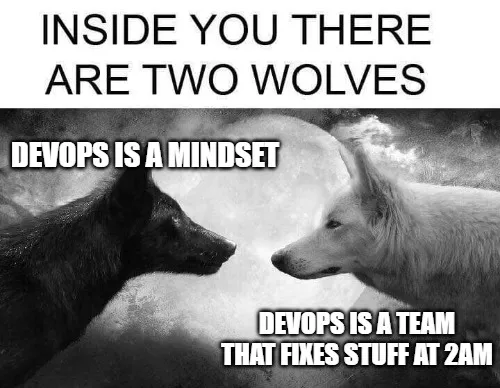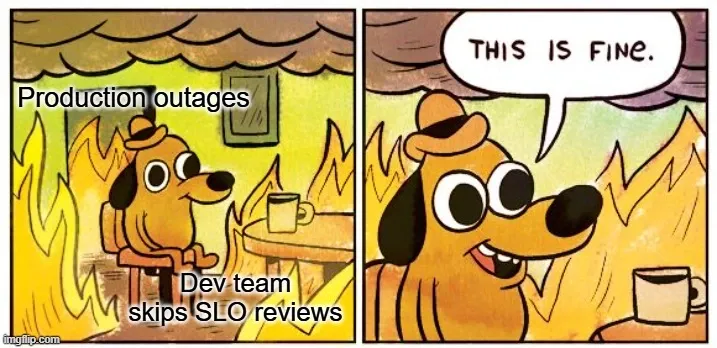The Summer Slowdown: A Perfect Storm for DevOps Debt?

Published on 29 July 2025 by Zoia Baletska

Summer hits the tech world differently.
Half the team is on vacation. Major releases are postponed. Deploys slow down. Slack goes quiet — except for the occasional “OOO until August 5th” message.
For many engineering orgs, it feels like a gentle pause. But for DevOps teams, this seasonal stillness is deceptive. When fewer changes are happening, the illusion of stability can mask long-festering issues: alert fatigue, noisy pipelines, incomplete observability, misconfigured infra.
The good news? This is the perfect time to pay down DevOps debt — if you're intentional.
🏖️ DevOps Debt Doesn’t Take a Vacation
Just because you aren’t deploying as much doesn’t mean your system has stopped evolving. Entropy in software systems is constant. Cloud resources drift. Access permissions creep. Alerting rules grow stale.
Summer can create a false sense of health:
-
📉 Fewer deploys ≠ better stability – No change doesn’t mean no risk. Incidents may simply be waiting to surface during the next wave of releases.
-
🧯 No incidents ≠ fewer alerts – Engineers may be ignoring or muting alerts, not resolving them.
-
☁️ Cloud waste continues – Unused test environments, zombie instances, and overly generous auto-scaling configs don’t pause billing during vacation season.
In short, DevOps debt piles up silently while everyone is chilling.
🌤️ Summer: The Ideal DevOps Maintenance Window
But here’s the opportunity: Summer is the best time to fix what’s normally too risky or disruptive to touch.
With reduced traffic, slower release cadences, and fewer stakeholders around, you have a golden window for low-pressure improvement.
Here are 4 high-leverage areas to focus on:
1. :no_bell: Declutter Your Alerts
Let’s be honest: half your alerts aren’t helpful. They’re noisy, unactionable, or long-ignored. But no one has time to fix them during release crunches.
Now is your chance:
-
Pull alert analytics from your monitoring platform (or use Agile Analytics).
-
Identify which alerts are never acknowledged or constantly snoozed.
-
Revisit thresholds. Group by service criticality.
-
Introduce runbooks to clarify next steps when alerts do fire.
→ Outcome: Less noise. More signal. Less stress during fall deploy marathons.
2. :test_tube: Optimise Your CI/CD Pipeline
Your pipeline is like plumbing — it’s only noticed when it’s broken or slow. During busy months, improvements get postponed. Summer is your DevOps plumber moment.
Consider:
-
Refactoring flaky test stages
-
Introducing parallelism
-
Migrating from old scripts to pipeline-as-code (e.g., GitHub Actions, CircleCI, GitLab)
-
Fixing security scan false positives
→ Outcome: A pipeline that’s faster, cleaner, and more reliable before your next major release cycle.
3. :mag: Patch Observability Gaps
Do you know what your services are doing when you're not watching?
Summer gives you breathing room to:
-
Ensure all production services emit logs, metrics, and traces
-
Consolidate logging tools
-
Refactor dashboards so they tell stories rather than just show charts
Ask: If an incident occurs while I’m on PTO, can someone else confidently triage it?
→ Outcome: Observability that empowers the whole team, not just the hero on-call.
4. :closed_lock_with_key: Clean Up Infrastructure and Access
Permissions and cloud infra often get left behind. This is the perfect time to:
-
Review IAM roles and RBAC settings
-
Deprovision unused services
-
Rotate secrets
-
Audit infrastructure-as-code for drift
→ Outcome: A more secure and efficient infrastructure, ready for fall scale-ups.
🧘 Rethink “Slowness” as Strategy
The summer slowdown doesn’t have to be downtime for your DevOps practice. It’s a breathing space. A stress-free zone. A moment to shift from reactive firefighting to proactive improvements.
By treating summer as a seasonal maintenance sprint, you give yourself—and your team—a massive head start for what comes next.
Because when autumn hits and everyone comes back online, you’ll be ready. With cleaner pipelines, quieter alerts, sharper dashboards, and fewer fire drills.
And honestly? That’s the kind of DevOps glow-up that even your sunburned coworkers will appreciate.
Supercharge your Software Delivery!
Implement DevOps with Agile Analytics
Implement Site Reliability with Agile Analytics
Implement Service Level Objectives with Agile Analytics
Implement DORA Metrics with Agile Analytics





